Observant readers will noticed that in a recent blog posting I showed an icon of the Transfiguration in which the figures of the three apostles do not have haloes. We can see the apostles being led up to and away from the mountain as well, and again no halos.
This puzzled me. Just when you think you might have a consistent picture of what went on you always find an anomaly. I was under the impression that saints are always shown with a halo, even in scenes which portray a moment in history before they are fully united with God in heaven. This is the heavenly reality, which touches all of time bursting through on the historical reality.
But there is something else to be taken into consideration. We become saints – sons and daughters of God who partake of the divine nature – on baptism. It is the action of the Holy Spirit that affects this, and for the apostles this did not occur until Pentecost. So it makes sense for images of pre-Pentecost to be without haloes.
The icon above is 15th century Russian, the one below is a 12th century icon from Mt Sinai:
So I started to look at more icons of the transfiguration and found that this was not unusual. Although sometimes they are portrayed with haloes, more often they were not. Then I noticed that the same was true for icons of the last supper. Although some do, many do not:
The same is true for the Apostles Communion
So This would be consistent with the fact that in this calling of the apostles from the 6th century mosaic at St Appollinare in Rome, the two apostles do not have halos either.
So what should we do today? I am considering this in the context of the new School of St Albans style, which is gothic. To my knowledge there is no contemporary account to explain precisely why the artists omitted the haloes. Also, it was not a universal rule there are exceptions. We can only surmise why some might have done it, and then decide what we think is best for artists today. It is perhaps this latter point that is the most important.
I go with Ouspensky et al who set out the principle, as articulated by Aidan Hart, the English iconographer, when I asked him about this:
As a rule the apostles don’t have haloes for events before Pentecost, although there are sometimes exceptions. The three disciples saw the uncreated light at the transfiguration, but as the liturgical texts say, only “inasmuch as they could bear it”.
Most icons make a point of how unprepared they were for this event by showing them falling over backwards. They were not capable before the Lord’s death and resurrection and Pentocost of receiving the light o:f the Holy Spirit into themselves.
They were not yet sons of God since they had not yet received the Spirit of adoption: “…you have received the spirit of sonship. When we cry, “Abba! Father!” 16 it is the Spirit himself bearing witness with our spirit that we are children of God…” (Romans 8:15,16)
This is to be contrasted with icons of Pentectost, where the apostles are arranged peacefullly, and have haloes: now they not only see the glory of God, but receive the Holy Spirit into themselves.


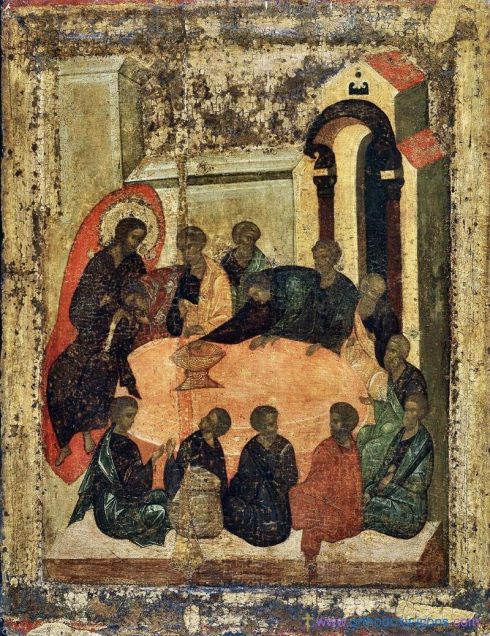
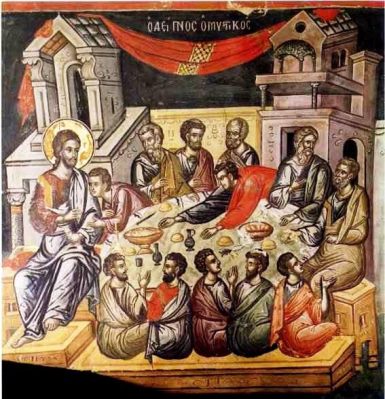
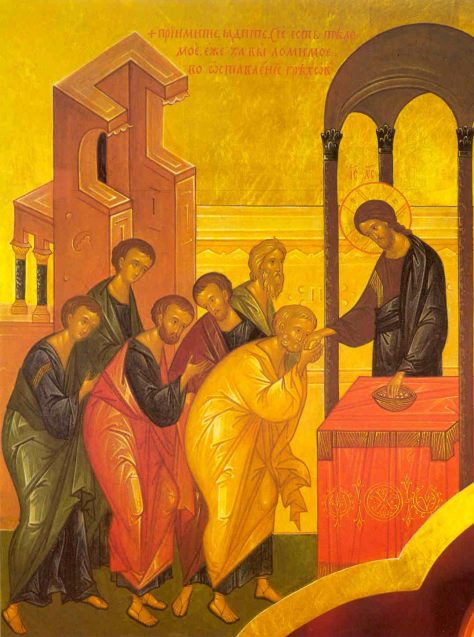
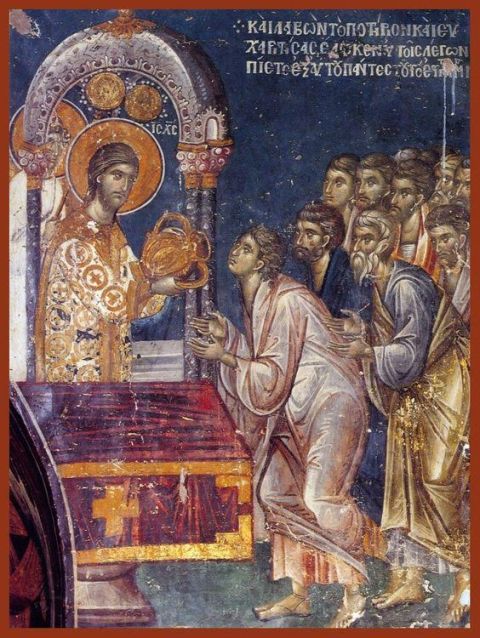
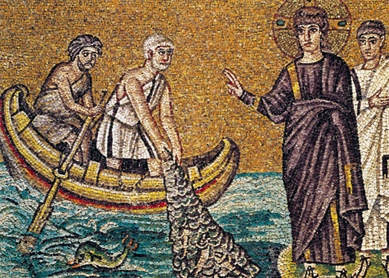
I like the old Byzantine convention that holy people while they are alive [e.g, bishops, an emperor with a good reputation] are painted with a square halo.
To the observer it says, “saint-in-the-making” and might be useful to revive.
LikeLike